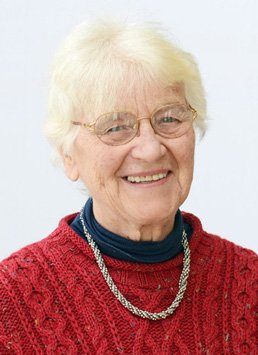Society for the Study of Women Philosophers, Inc.
a non-profit, tax-exempt educational charity 501(c)3 Internal Revenue Code
Kristina Wasa, Queen Christina of Sweden
1626-1689
Descartes' Patron, Virtue Ethics
|
Kate Lindemann's Women Philosophers pages |
 |
Remember!! Your purchase of books by clicking on Abe Books or Amazon links through this site earns us a small commission that is used to provide travel scholarships. |
Kristina Wasa was a gifted and adventurous woman who became Queen of Sweden and then abdicated that position. Abandoned by her mother, who had expected a male child and was disappointed to have a female baby, Kristina was nurtured by her father. Her father was killed when she was only six years old and she was then crowned Queen of Sweden.
She was not afraid to take on some of the major political forces of her day and sometimes was 'punished' for her choices in life.
Chronology
1626 Kristian Wasa is born in Sweden to Maria Eleonora of Brandenburg and King Gustav II Adolf . Previous to her birth soothsayers and predicted that Maria Eleonora would have a boy. Her mother, was disappointed in finding that she gave birth to a girl and would have nothing to do with the child. Her father, however, took a real interest in his daughter.
1630 When she was four, her father, King Gustav presented her to the Estates as his successor and she was made the legal successor to the throne. There was a regent installed to oversee Sweden until Kristina reached. A group of scholars, headed by Johannes Matthiae, a theologian, were appointed to oversee Kristina Wasa's education. In that same year, the King goes to fight against Ferdinand, Emperor of Austria.
1632 King Gustav is killed at the battle of Lutzen. His wife retires to her room to mourn. Kristina Wasa is crowned Queen of Sweden.
Her education continues. She learns German, French, Italian, Spanish, and Swedish. She is also learns to read Latin. She is trained in the philosophy and leadership style of the Stoics. She is also prepared for military life - learning horsemanship, sword work, and other aspects of battle as well as sports.
1640 She begins to participate in Council meetings.
1644 - Having reached her majority she is again crowned Queen of Sweden. She begins to reduce the power of Oxenstierna who had opposed her leadership.
1645 - She has the first newspaper in Sweden created.
1646 She begins contacting Descartes. She raises questions and he replies with an 8 page letter. She continues to raise questions related to his work.
1648 The Thirty Years' War ends - in part as a result of Kristina Wasa's efforts. She begins to assemble a scholars at the court. Isaac Vossius organizes an extensive library. In the ensuing years Nicholas Heinsius, Claudius Salmsius, Johannes Scheffer, Samuel Bochart and Christian Ravius all were in attendance.
1650 She invites Rene Descartes to Stockholm. He comes. some say he comes because he wants to intervene for Elizabeth of Bohemia who had been trying to get some assistance from Kristina Wasa. Descartes offers her discourse on philosophy each morning at 5 AM. Descartes, who was never strong, contracts pneumonia and dies. Kristina is blamed for his death.
1651 She begins clandestine communications with Jesuits Malines and Casati. She considers abdicating - in part because she is skeptical of tenets of Lutheran religion and as head of Sweden, she would be committed to Lutheran Church and its faith.
1652 Kristina Wasa has a nervous breakdown.
1654 She decides to abdicate. She names her cousin, Charles X Gustav as her successor. She leaves Sweden immediately, dons men's clothing, and starts traveling Europe.
1655 Kristina Wasa converts to Catholicism. She has an audience with Pope Alexander VII in Rome.
1656 She goes to France where she establishes an academy.
1657 She attempts to seize Naples, visits Fontainebleau, and does chemcial experiments. While in Fontainebleau, she learns that her servant told the Pope of her plans to seize Naples. She has the servant killed in her presence after having last rites of absolution given to him. All Europe is horrified. When she returns to Rome, the Pope does not welcome her.
1660 Kristina Wasa visits her estates in Sweden and studies the theory of the philosopher's stone.
1666 She studies astronomy with Lubenitz.
1667 She returns to Sweden and tries to gain the right to rule Poland. She fails and so returns to Rome.
1668 She installs an observatory in her palace. She publishes a letter on tolerance of the French Huguenots in Pierre Bayle's Nouvelles de la Republique des Lettres and writes a manifesto defending the Jews of Rome.
1670 Les Sentiments Heroiques and L'Ouvrage de Loisir: Les Sentiments Raisonnables, her collection of maxims begin in letter form. These are published posthumously.
1674 Kristina Wasa holds Academia Reale. She becomes a patroness of the arts. She founds an academy for philosophy and literature, sponsors Scarlatti and Corelli and helps found the first pubic opera house in Rome.
1680 She commissions work by several scholars including the art historian Filippo Baldinucci and Giovanni Bernini.
1689 April 19. Kristina dies and is buried in Rome
Works
Autobiography
Les Sentiments Heroiques and L'Ouvrage de Lisir: Les Sentiments Raisonnables or Maxims
Secondary materials:
Such a life was sure to attract Hollywood. Here is a site about the two moves made about Kristina Wasa
Kristina Wasa is among the more than 100 women featured in A Pictorial History of Women Philosophers photo album and is one of more than 30 women featured in Busted!! A Pictorial History of Women Philosophers DVD Volume 2.
This page was last updated 12/12/14.
Society for the Study of Women Philosophers